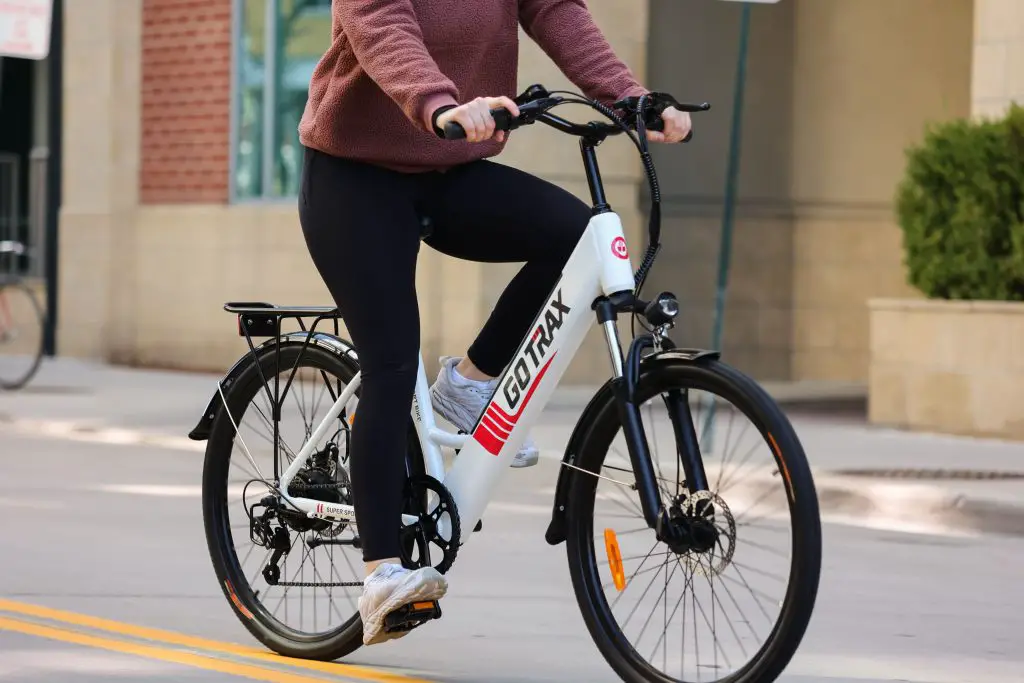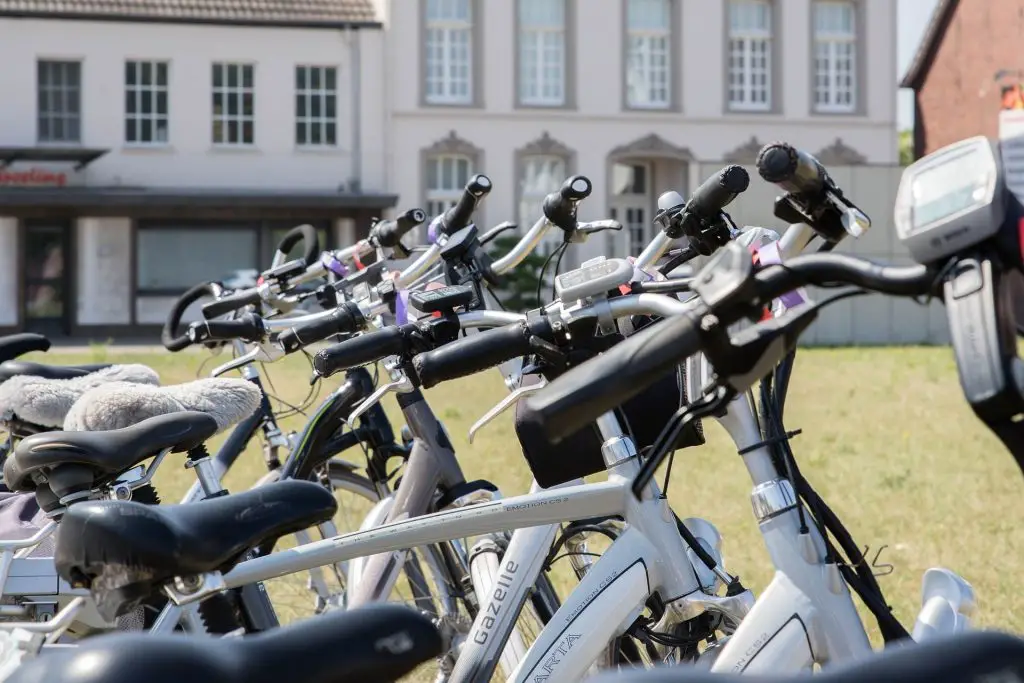In recent years, the popularity of electric bikes has skyrocketed, with more and more people embracing the convenience and eco-friendliness of this mode of transportation. However, purchasing a brand-new e-bike can be a significant investment, which is why many cyclists are turning to e-bike conversion kits as a cost-effective alternative. By adding an electric motor, battery, and other components to an existing bicycle, riders can easily transform their traditional bike into an efficient and powerful e-bike.

In this article, we’ll explore the ins and outs of e-bike conversion kits, including how they work, their benefits and drawbacks, and what to consider when choosing the right kit for your needs. Whether you’re an avid cyclist or simply looking for a greener and more sustainable way to get around, e-bike conversion kits are definitely worth considering.
Contents
What is an E-Bike Conversion Kit?
An e-bike conversion kit is a set of components that can be added to a traditional bicycle to convert it into an electric bike. The kit typically includes an electric motor, a battery, a controller, and a sensor that measures pedal cadence or torque. Some kits may also include a display unit, wiring harness, and other accessories.
The electric motor is usually mounted on the front or rear wheel hub, or in some cases, on the bottom bracket. The battery is usually mounted on the frame or the rear rack. The controller is responsible for regulating the power output of the motor, and the sensor measures the rider’s pedaling effort and feeds that information to the controller.
E-bike conversion kits are a popular option for people who want to add electric assistance to their existing bicycle without having to buy a new e-bike. They are also a cost-effective way to upgrade an older or less expensive bicycle to make it more versatile and functional.

The Ins and Outs of E-Bike Conversion Kits
- Electric Motor: The electric motor is the heart of the e-bike conversion kit. It’s what powers the bike and provides assistance when pedaling. Most motors are located in either the front or rear wheel hub, but some kits place the motor in the bottom bracket or mid-drive position. When selecting a motor, consider factors such as power output, efficiency, and noise level.
- Battery: The battery is what powers the electric motor, and it’s an essential component of any e-bike conversion kit. Battery capacity is measured in watt-hours (Wh), and the higher the capacity, the longer the range. Battery placement can vary depending on the kit, but it’s usually mounted on the frame or the rear rack.
- Controller: The controller is responsible for regulating the power output of the motor. It receives input from the sensor and determines how much assistance to provide based on the rider’s pedaling effort. The controller also manages other functions, such as the display unit and battery management system.
- Sensor: The sensor measures the rider’s pedaling effort and feeds that information to the controller. There are two main types of sensors: cadence sensors, which detect how fast the pedals are turning, and torque sensors, which measure the amount of force applied to the pedals.
- Compatibility: When choosing an e-bike conversion kit, it’s important to ensure that it’s compatible with your bike’s frame and components. Some kits are designed to work with a specific type of bike, such as a road bike or mountain bike, while others are more versatile and can be used with a wide range of bikes.
- Installation: Installing an e-bike conversion kit can be a challenging task, especially if you’re not familiar with bike mechanics. It’s important to follow the installation instructions carefully to ensure that the kit is installed safely and correctly.
Benefits of E-Bike Conversion Kits
E-bike conversion kits offer a range of benefits that make them an attractive option for many cyclists. Here are some of the key advantages of e-bike conversion kits:
- Cost-Effective: E-bike conversion kits are a cost-effective way to add electric assistance to your existing bike, compared to buying a new e-bike. This makes them a great option for people who don’t want to spend a lot of money on a new bike but still want the benefits of electric assistance.
- Versatile: E-bike conversion kits can be used with a wide range of bikes, including road bikes, mountain bikes, and commuter bikes. This means you can choose a kit that’s compatible with your bike and customize it to your specific needs.
- Increased Range: E-bike conversion kits can significantly increase your bike’s range by providing electric assistance when pedaling. This means you can ride further and for longer periods without getting tired.
- Reduced Effort: E-bike conversion kits make cycling easier by reducing the effort required to pedal, especially when climbing hills or riding into a headwind. This can make cycling more enjoyable and accessible for people of all fitness levels.
- Eco-Friendly: E-bike conversion kits are an eco-friendly transportation option, as they produce zero emissions and require less energy to operate than a car. This makes them a great choice for people who want to reduce their carbon footprint and contribute to a more sustainable future.
- Upgrade Older Bikes: E-bike conversion kits can upgrade older bikes and extend their useful life. This means you can keep using your favorite bike and enjoy the benefits of electric assistance without having to buy a new bike.

Drawbacks of E-Bike Conversion Kits
- Installation: E-bike conversion kits can be challenging to install, especially if you’re not familiar with bike mechanics. Some kits may require specialized tools or knowledge, which can make installation difficult or costly.
- Weight: E-bike conversion kits can add extra weight to the bike, which can affect handling and maneuverability. This can be especially noticeable when riding the bike without electric assistance.
- Compatibility: E-bike conversion kits may not be compatible with all bikes, and some kits may require modifications to the bike’s frame or components. This can add extra costs and complexity to the installation process.
- Cost: E-bike conversion kits can be expensive, especially if you want a high-quality kit with a powerful motor and long-lasting battery. In some cases, the cost of the kit and installation may approach or exceed the cost of buying a new e-bike.
- Maintenance: E-bike conversion kits may require additional maintenance compared to a traditional bike, such as regular battery charging, motor maintenance, and controller adjustments.
What do you need to consider when choosing the Right Kit for your needs?
- Compatibility: Make sure the kit is compatible with your bike’s frame and components. Some kits may only work with certain types of bikes or require modifications to the frame.
- Motor power: Consider the motor’s power, as this will affect the level of assistance you get while riding. A more powerful motor will provide more assistance but may also add more weight to the bike.
- Battery life: Check the battery life of the kit, as this will determine how far you can ride on a single charge. Consider your typical riding distance and frequency to choose a battery that meets your needs.
- Price: E-bike conversion kits can vary widely in price, so consider your budget when choosing a kit. Remember that a more expensive kit may provide better performance and durability but may not be necessary for everyone.
- Installation: Consider the level of difficulty in installing the kit. Some kits may require specialized tools or knowledge, which can add extra costs or make installation more difficult.
- Warranty: Check the warranty of the kit, as this can provide peace of mind in case of defects or problems.

Conclusion
In conclusion, e-bike conversion kits offer a range of benefits and drawbacks that should be considered before making a decision. These kits can provide cost-effective and eco-friendly transportation options, increase the range and reduce the effort required to pedal, and upgrade older bikes. However, they can also be challenging to install, add extra weight to the bike, and may not be compatible with all bikes. When choosing the right e-bike conversion kit for your needs, consider factors such as compatibility, motor power, battery life, price, installation, and warranty. By carefully considering these factors, you can choose a kit that meets your needs and helps you enjoy the benefits of electric assistance while cycling.
Want some tips on how to protect your Electric bike from rain? Read it here.





